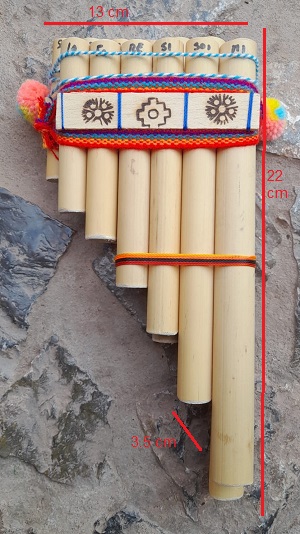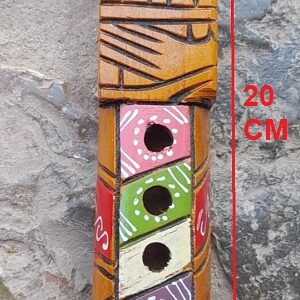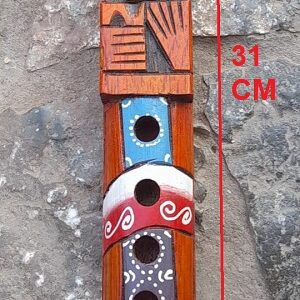Detailed accounts written by Spanish chroniclers of the sixteenth century emphasize the importance of music and dance in Inca celebrations and festivals. They describe musical instruments such as flutes and panpipes made of bone, reed, and fired clay, shell trumpets called pututos, ceramic whistles, ocarinas, trumpets, and drums, as well as rattles made with a variety of materials. These objects are sometimes portrayed as delicate instruments played with solemnity and virtuosity, sometimes as instruments generating meaningless sounds during pagan or diabolic rituals. The Incas and their predecessors used music to communicate with the ancestors, heal the sick, and bury the dead. Music followed them in war and pilgrimages, perhaps providing them with supernatural power.
MUS-ZAM 2_0001 _ ZAMPOÑA medium size_ Andean Music of Incas
$0.00
+ Free ShippingZAMPOÑA medium SIZE _ ANDEAN MUSIC OF INCAS
Category: MUSIC
Weigth: 123 gr
Product Dimensions: 22 cm L // 13 cm W // 3.5 cm H
Special Feature: Hand Made
100% hand made / Peruvian Art
Hand-crafted item — color, size and/or motif may vary slightly
Dry cleanning recommended
The siku (Aymara and Quechua) or zampoña (Spanish) originated in the highlands of the Andes near Lake Titicaca. The pipes were originally made of a light reed called songo that grows in the banks of Lake Titicaca. The zampoña has two separate rows of pipes, open at one end and closed at the other end. There are six pipes per row horizontally arranged with the open end at the top. They are held together by a string that goes between the pipes and around them. There are different sizes of zampoñas. Malta is the smallest, ika is the small, siku is medium size, sanka is medium large size, semitoyo is large, and toyo is the largest size of zampoña.




Reviews
There are no reviews yet.